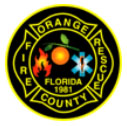


Orange
County Fire Rescue |
||
“Orange
County Medics Saved by ‘Super Human’ Software”* *Journal of Emergency Medical Services Magazine, 12/99 |
 |
|
Client: Central Florida’s Orange County Fire Rescue Dept. (OCFRD) has 32 stations and 60 pieces of apparatus responsible for delivering emergency medical services across 813 square miles. Challenge: More than 70,000 pages of patient care reports were manually created and printed at 32 different locations each year. These reports had to be manually filed and organized at each location, and then physically moved to a master file location at headquarters. They may have also needed to be moved back again if returned by Quality Assurance for amendment. Having multiple file cabinets at multiple locations and keeping everything in sync generated a literal mountain of documents and a tremendous drain on resources. Orange County needed a new data management system that would securely and reliably capture and track EMS incident data. This would be a mission critical system that must:
Solution: Matrix and OCFRD designed and developed StatSuite™, a complete system for EMS incident data capture, reporting and integration that met all of the above requirements. Using IBM Lotus Notes as the base product for security, scalability and reliability in operation, StatSuite integrates the incident information from the CAD system; captures patient data either in the field or at station computers; allows entry of patient assessment, treatment, and medications; aggregates and analyzes data from multiple agencies; offers customizable workflow options; and supports local, state and federal reporting requirements. Because of the serious need for a new system, an aggressive timetable of 35 days was established for developing and implementing the system, developing the training and technical support curriculum, training the trainers who would then train the employees, and installing the software on all the PCs. Key Features: The most important aspect of the system is that it is seamless. The system never goes down, and entering and saving patient reports is managed by each computer -- paramedics are not required to take any action to cause the reports to move back and forth from their computer. Point-and-click picklists minimize typing and improve data accuracy. Data entry fields are presented sequentially, not layered window-on-top-of-window. Data entry fields are limited to those pertinent to the incident. Diagrams, scanned images, waveforms, EKG’s and voice recordings can be attached and embedded directly into the patient record. Through the use of a unique serial number armband affixed to each patient by the paramedic, the EMS patient care report is matched with hospital records and added to the hospital chart. |
||